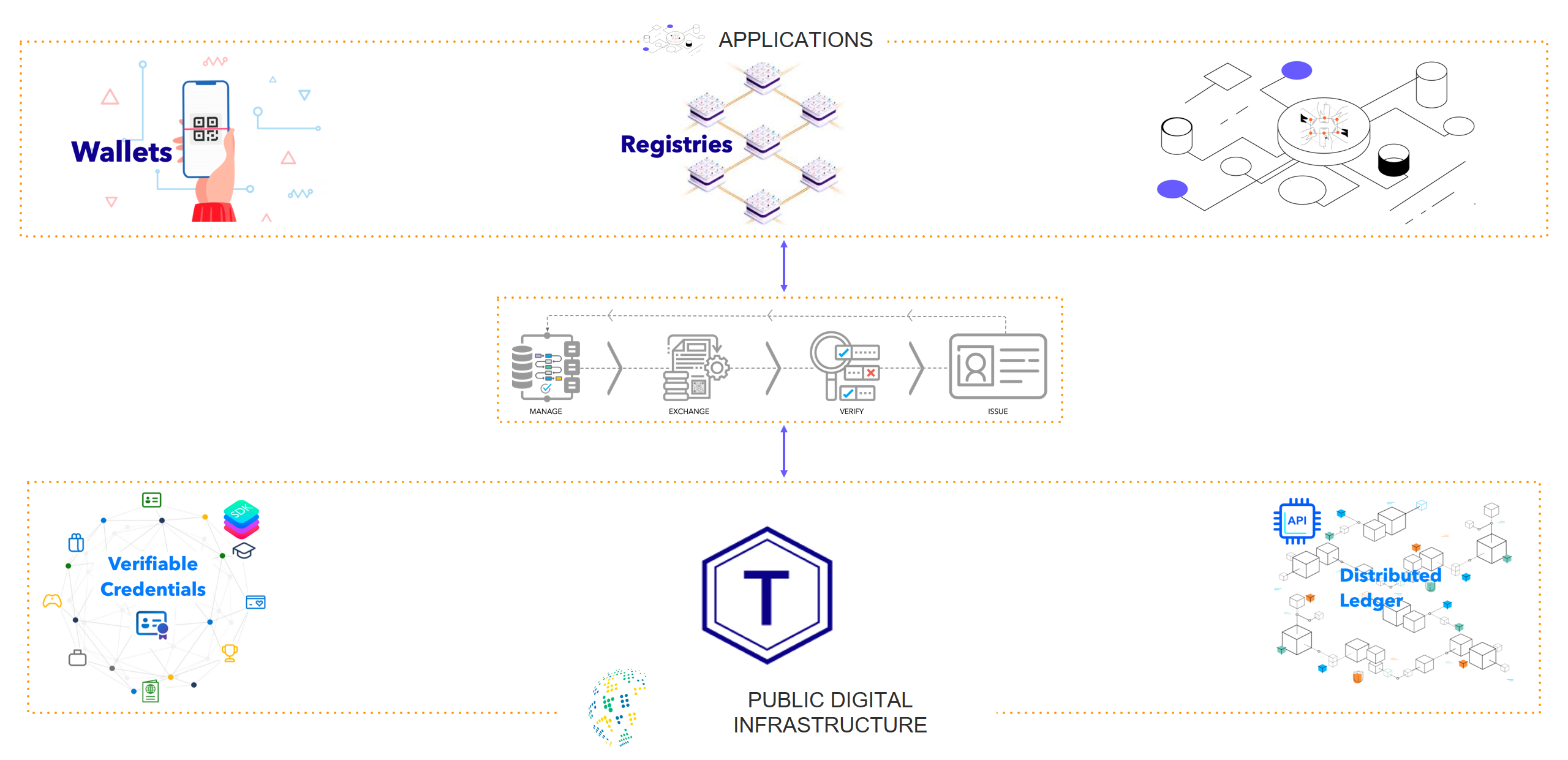A Digital Public Infrastructure to enable trade logistics
Overview
For the scope of this document, we will be reviewing the logistics sector concerning land and marine shipping and the impact of implementing a Digital Public Infrastructure to improve effectiveness and efficiency of transactions.
India’s logistics sector is estimated to account for about 14.4% of GDP. The unorganised sector amounts to over 90% of the logistics sector. The average logistics cost per GDP among BRICS countries was 11%. However, in the case of India, the cost share per GDP was 14%. 1
“From 13-14 percent logistics cost, we should all aim to bring it to single-digit as soon as possible”
Prime Minister Shri Narendra Modi – Launch of National Logistics Policy (NLP)
Logistics as a sector has garnered a significant focus given the multiplier effect it can have on the overall economy. Under the overview of the National Logistics Policy the central government has launched multiple initiatives spanning across – Sagarmala, Bharatmala, Dedicated Freight Corridors, Paperless EXIM trade through e-sanchit, Unified Logistics Interface Platform ULIP, Ease of logistics Services -E-Logs etc. 2
Overall, the PM Gatishakti National Master Plan will support the National Logistics Policy across Initiatives. The Gatishakti University will provide the talent pool required to support this overall endeavour.
Taking a deep dive into the Shipping domain and the process flow
Shipping process for a container export – Land and Sea
The below diagram depicts the document flow at each stage of the shipping process. In addition to the below depiction is the parallel process of Payment & Forex reconciliation which happens with the RBI.

Reviewing some of the operational challenges in this process
- Transparency / Visibility of shipment – Real time visibility data is not easily available
- Speed and efficiency – Getting the right goods to the right place at the right time through digitised and efficient processes
- Requirement of Physical documents – Banks in India need a physical copy of the Letter of credit (LC) and the Bill of lading (BL)
- Verification of documents – Manual checks needed to verify the paper documents that could result in human errors and delayed responses
- Non digital Processing of documents leading to delays in approvals and payments
- Multi-step Regulatory compliance process – Account reconciliation, KYC verification is delayed on account of multiple paper trails 3
Bank reconciliation process for export payments
Reviewing the Reserve Bank of India’s Foreign Exchange (FOREX) reconciliation that takes place in parallel to the actual shipping process

The above depiction is in the scenario of the payments being received and the process being adhered to as per schedule. However there are often scenarios involving delay in FOREX receipts, BRC process and others, that end up consuming time & effort and blocking significant working capital of the stakeholders involved.
Introducing a Digital Public Infrastructure (DPI) for seamless transactions based on a single source of truth on a Public Blockchain
We propose an architecture that’s premised on the availability of a single source of trust for all the stakeholders in a transaction in the logistics domain. 4
- The components of this architecture are
Secure Digital wallets – Residing on Devices (Computer / Mobile) of authorised personnel who can access and update information related to a transaction. - Registry data – Government registries can store their secured Haskey encrypted data of regulatory documents issued that can be availed for verification and approval processes through a transaction
- Secure storage & access on a Public Blockchain – The underyling trust infrastructure will be a Public Blockchain that will enable seamless verification in each step of the transaction

The steps involved in the actual verification process would be as follows
- Issuers create credentials and tokens
- Holders store the credentials
- Verifiers ask for proof based upon credentials 4

The verifications that can be enabled in this transaction are
- Source of the data – The credential issuing entity
- Subject of the data – The Entity presenting the credential is the one whom it was issued to
- Veracity of the data – The credentials haven’t been tampered with
- Status of the data – Whether the issuer revoked the credential as of a particular point in time
Working model of a DPI for export
Taking the example of the shipping process discussed earlier we will review the components of a DPI that can help streamline & strengthen the process 4

As depicted in the above diagram the application layer of the DPI enables authorised personnel to Manage & Verify transactions through applications accessible via Computers and Mobiles. The underlying trust infrastructure is the information residing on the DPI purposed through Verifiable Credentials on a Distributed Ledger. The Public Blockchain based infrastructure acts as a single source of truth since it is Non-tamperable and Immutable, except by authorised processes. Deploying a Blockchain for governance is the next step in enabling ease of governance.
This Vision of a Digital Public Infrastructure will effectively link the entire logistics chain efficiently bringing down the Overall cost, Making the process seamless resulting in a significant boost to the overall economy.

